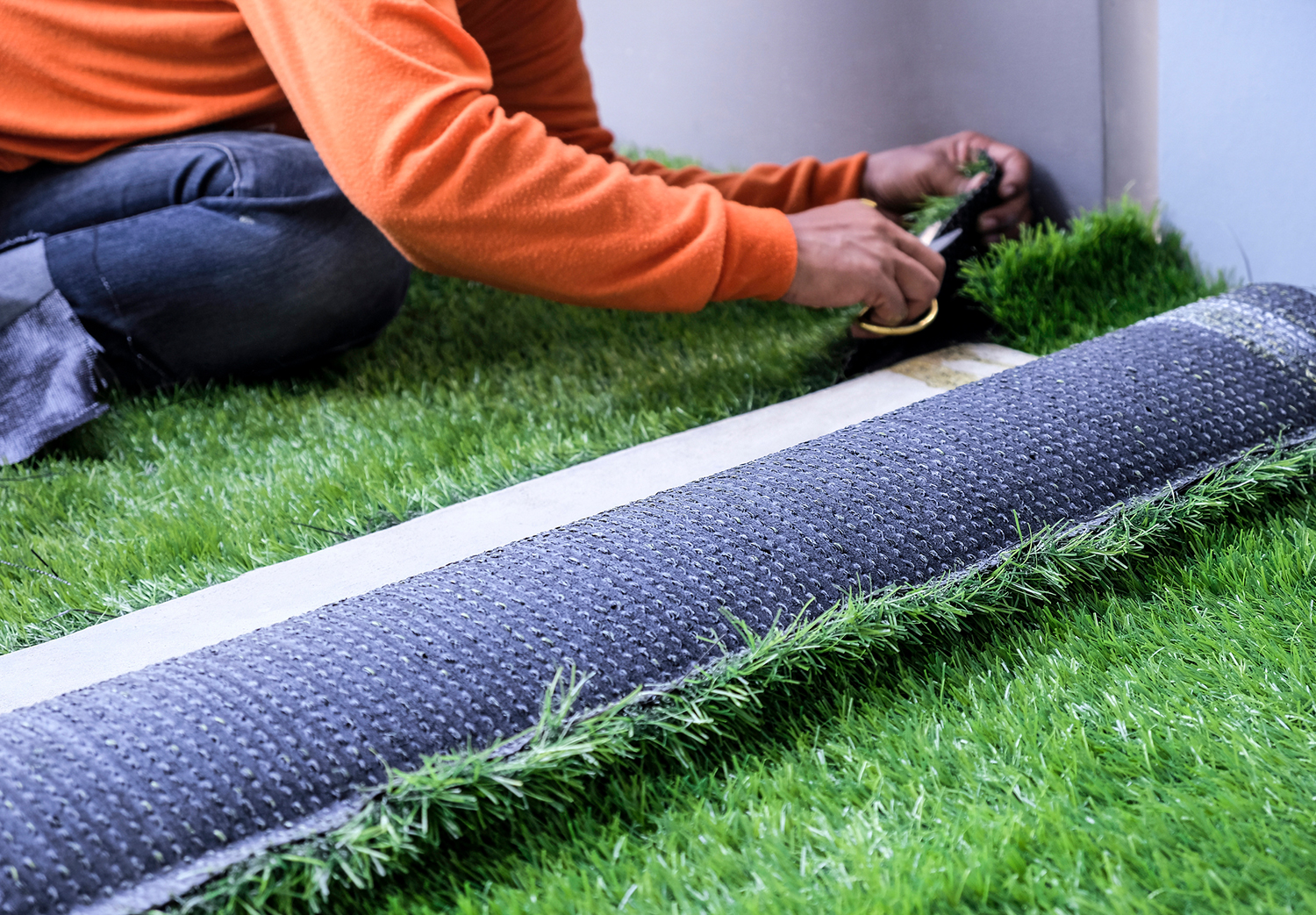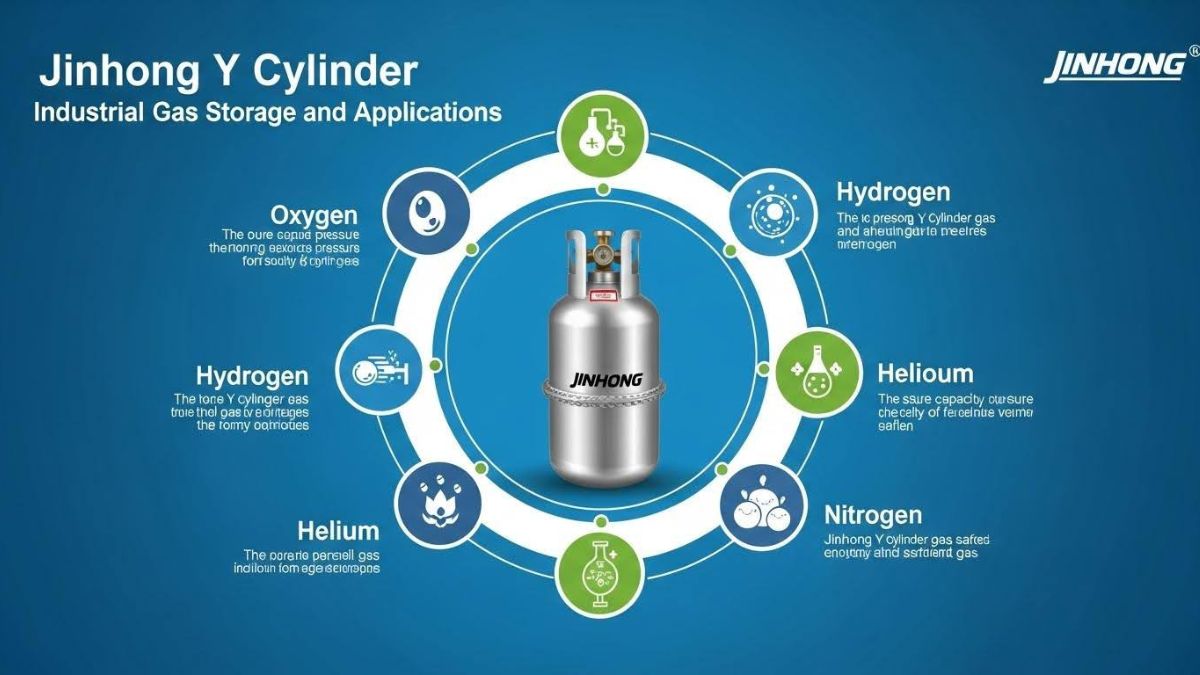TOPIC
How to Lay Artificial Grass: Avoid Common Mistakes

Are you tired of mowing, watering, and constantly maintaining your natural lawn? Learning how to lay artificial grass might be the perfect solution for you.
This article will walk you through the process step-by-step, helping you avoid common pitfalls and achieve a beautiful, low-maintenance lawn that stays green all year round.
Understanding Artificial Grass
Before we get into the nitty-gritty of installation, let’s take a moment to understand what artificial grass is and why it’s becoming increasingly popular among homeowners.
What is Artificial Grass?
Artificial grass, also known as synthetic turf, is a surface made from synthetic fibers designed to mimic the look and feel of natural grass. It’s used in various settings, from residential lawns to sports fields, offering a low-maintenance alternative to natural grass.
Benefits of Artificial Grass
- Low maintenance: No mowing, watering, or fertilizing required
- Year-round green appearance
- Durability: Withstands heavy foot traffic
- Pet-friendly options available
- Water conservation
- No mud or bare patches
- Allergy-friendly: No pollen production
Types of Artificial Grass
There are several types of artificial grass available, each suited to different needs:
- Nylon: Extremely durable, ideal for high-traffic areas
- Polyethylene: Soft and natural-looking, great for residential lawns
- Polypropylene: Budget-friendly option, best for light use
- Hybrid: Combines different materials for optimal performance
Preparing for Installation
Proper preparation is key to a successful artificial grass installation. Here’s what you need to do before laying your new turf.
Tools and Materials You’ll Need
- Artificial grass
- Weed membrane
- Sharp utility knife
- Joining tape and adhesive
- Sand (for infill)
- Compactor plate
- Rake
- Shovel
- Wheelbarrow
- Spirit level
- Hammer and nails (for securing edges)
- Turf cutter (if removing existing grass)
- Crushed stone or decomposed granite (for sub-base)
- Edging material (optional)
Measuring Your Space
Accurately measure the area where you plan to install the artificial grass. Add an extra 5% to your calculations to account for cuts and waste. Remember to measure any unusual shapes or curves in your lawn area.
Removing Existing Grass or Vegetation
If you’re wondering how to lay artificial grass on grass, the first step is to remove the existing natural grass. Here’s how:
- Use a turf cutter to remove the grass and about 3-4 inches of topsoil
- If a turf cutter isn’t available, use a sharp spade to cut the grass into manageable strips
- Roll up the strips of grass and dispose of them properly
- Remove any remaining roots or debris
Dealing with Soil
For those learning how to lay artificial grass on soil, proper soil preparation is crucial:
- Remove any rocks, roots, or debris from the soil
- If the soil is very clay-like, consider adding a layer of sand to improve drainage
- Use a rake to roughly level the area
- Compact the soil using a plate compactor
Step-by-Step Guide: How to Lay Artificial Grass
Now that you’re prepared let’s go through the installation step by step.
1. Prepare the Ground
Whether you’re laying artificial grass on soil or a previously grassed area, proper ground preparation is crucial.
- Remove any remaining rocks, roots, or debris
- Use a rake to level the area, paying special attention to any dips or bumps
- Compact the soil using a plate compactor, making several passes in different directions
- Create a slight slope for drainage (about 1 inch per 8 feet) away from buildings or structures
2. Add a Sub-Base
A proper sub-base is essential for drainage and stability:
- Spread a layer of crushed stone or decomposed granite about 2-3 inches deep
- Use a rake to distribute the material evenly
- Compact this layer thoroughly with a plate compactor
- Check for levelness using a spirit level, adjusting as necessary
- Water the area and allow it to dry to reveal any low spots, then fill and compact these areas
3. Install Weed Membrane
A weed membrane prevents unwanted plant growth:
- Roll out the weed membrane over the entire area
- Overlap seams by at least 4 inches to prevent weeds from growing through
- Secure the edges with landscape staples
- Cut the membrane to fit around any obstacles or edges
4. Lay the Artificial Grass
This is where you put your knowledge of how to lay artificial grass into practice:
- Roll out the artificial grass, ensuring the blades face the same direction (usually towards the house or main viewing area)
- Allow the grass to acclimate for 24 hours before cutting or securing
- If using multiple pieces, make sure the pile direction is the same for all pieces
- Trim excess grass using a sharp utility knife, cutting from the back of the turf
- Leave about 5mm overhang at the edges for a neat finish
5. Join Seams (If Necessary)
If your area requires multiple pieces of turf:
- Lay the edges together and check for a seamless appearance
- Fold back the edges and lay joining tape along the seam
- Apply adhesive to the tape
- Carefully lay the grass edges back down, ensuring no fibers get caught in the adhesive
- Use a heavy roller or walk on the seam to ensure good contact
6. Secure the Edges
Proper edge securing prevents lifting and gives a neat finish:
- Nail the edges of the grass every 4-6 inches along the perimeter
- Use galvanized nails or special artificial grass pins
- In areas where nailing isn’t possible, use landscape staples or a strong adhesive
- If using edging material, install it before securing the grass
7. Add Infill
Infill helps the grass blades stand upright and adds weight:
- Spread a layer of silica sand or rubber infill evenly across the surface
- Use about 1-2 pounds of infill per square foot of grass
- Brush the infill into the fibers using a power broom or stiff brush
- Work in sections to ensure even distribution
8. Final Touches
- Brush the grass fibers upright using a stiff brush or power broom
- Water the area to help settle the infill
- Check for any areas that need additional infill or brushing
Common Mistakes to Avoid
When learning how to lay artificial grass, be aware of these frequent errors:
1. Inadequate Ground Preparation
Skipping proper ground preparation can lead to an uneven surface and poor drainage. Take the time to level and compact the ground thoroughly. Remember, the base is the foundation of your artificial lawn, and any imperfections will show through the turf.
2. Incorrect Seam Joining
Visible seams can ruin the look of your artificial lawn. Ensure you:
- Use the correct joining tape and adhesive
- Take care to align the grass blades at the seams
- Avoid stretching the turf when joining pieces
- Allow adequate drying time for adhesives
3. Neglecting Drainage
Poor drainage can cause water to pool on your artificial grass, leading to mold and bacteria growth. Always:
- Create a slight slope away from buildings
- Consider installing a drainage system if your area is prone to heavy rainfall
- Use a permeable base material
4. Using the Wrong Infill
Different types of artificial grass require different infill materials. Make sure you:
- Use the correct type and amount as recommended by the manufacturer
- Distribute the infill evenly across the surface
- Brush the infill thoroughly into the fibers
5. Cutting Corners on Quality
While it might be tempting to opt for cheaper materials, investing in high-quality artificial grass and installation supplies will pay off in the long run with a better-looking, longer-lasting lawn. Quality materials often come with better warranties and UV protection.
6. Ignoring the Pile Direction
Artificial grass has a ‘grain’ or pile direction. Installing pieces with different pile directions will result in a patchy, unnatural look. Always ensure all pieces are laid with the pile running in the same direction, typically towards the main viewing area.
7. Rushing the Installation
Taking shortcuts or rushing through the installation process can lead to numerous problems down the line. Take your time with each step, especially ground preparation and seam joining.
Conclusion
Learning how to lay artificial grass can transform your outdoor area into a low-maintenance, always-green space. By following this guide and avoiding common mistakes, you’ll be well on your way to enjoying a beautiful synthetic lawn for years to come.
Remember, proper preparation and attention to detail are key to a successful installation. Whether you’re laying artificial grass on soil or replacing an existing lawn, these steps will help you achieve professional-looking results.
While artificial grass isn’t the right choice for everyone, it offers a practical solution for many homeowners looking to reduce maintenance and water usage while maintaining an attractive outdoor space. Take the time to research your options, prepare thoroughly, and invest in quality materials for the best long-term results.
TOPIC
Exploring the Jinhong Y Cylinder: Industrial Gas Storage and Applications

In industrial and laboratory environments, the need for reliable gas storage solutions is crucial. Among the many formats available, the Jinhong Y cylinder stands out as a high-capacity, high-pressure gas container designed for efficient storage and transport of specialty gases. With an emphasis on purity, performance, and safety, Y cylinders are trusted by industries ranging from semiconductors and laboratories to petrochemical plants and aerospace operations.
This article takes a deep dive into the design, specifications, applications, and advantages of the Jinhong Y cylinder, while also shedding light on the broader offerings of Jinhong, a global player in the specialty gas and cylinder market.
What Is a Y Cylinder?
A Y cylinder—sometimes referred to as a “ton container” or “T cylinder”—is a large, horizontal gas cylinder used to store and transport gases in bulk, especially under high pressure. These cylinders are ideal for gases that are either costly or consumed in large volumes, such as:
- Sulfur hexafluoride (SF₆)
- Silane (SiH₄)
- Ammonia (NH₃)
- Chlorine (Cl₂)
- Hydrogen chloride (HCl)
Y cylinders are constructed using high-strength steel or other reinforced materials and come equipped with pressure relief valves, gas-specific valve types, and neck threads tailored to the properties of the stored gas.
Dimensions and Specifications of Y Cylinders
Though specifications may vary slightly by manufacturer, Jinhong’s Y cylinders typically follow global standards for gas container design. Here are some standard specifications:
| Specification | Typical Value |
| Water Capacity | 49.5 – 52.5 liters |
| Working Pressure | Up to 150 bar (depending on gas) |
| Material | Seamless steel |
| Cylinder Orientation | Horizontal |
| Cylinder Weight | ~90 – 110 kg (empty) |
| Certification Standards | ISO9809, DOT, TPED, GB, etc. |
These cylinders are built to resist corrosion, handle hazardous contents, and ensure long-term durability under demanding industrial conditions.
Why Choose the Jinhong Y Cylinder?
Jinhong, a trusted name in the specialty gas industry, has a reputation for producing high-quality gas cylinders and supplying ultra-high purity gases to global markets. Their Y cylinders stand out due to the following reasons:
1. High Storage Capacity
Compared to standard industrial cylinders, Y cylinders provide significantly more gas per unit, reducing the frequency of cylinder changes and minimizing downtime.
2. Safety Compliance
Every Jinhong Y cylinder complies with international safety codes, ensuring that gases are safely stored and transported. From valve compatibility to explosion-proof construction, these cylinders are designed for handling toxic, corrosive, or flammable gases.
3. Versatility Across Industries
Whether it’s used in a semiconductor cleanroom or a chemical processing facility, the Y cylinder can handle diverse gases without compromising purity or safety.
4. Customization Options
Jinhong offers a range of customizable features for its Y cylinders, including:
- Valve type (Diaphragm, Ball, Needle)
- Gas purity levels
- Color-coded coatings
- Stamped serial numbers for traceability
Industrial Applications of Y Cylinders
Y cylinders are essential in sectors where gas consumption is high and continuous. Let’s explore their role across a few industries:
Semiconductor Industry
Gases like silane (SiH₄), ammonia (NH₃), and hydrogen chloride (HCl) are delivered in Y cylinders to semiconductor fabs. Their large volume capacity ensures consistent feedstock supply for chemical vapor deposition (CVD) and etching processes.
Chemical Manufacturing
In chemical synthesis and polymer production, bulk gases are used in continuous-flow reactors. Y cylinders reduce gas replacement frequency and ensure stable operations.
Power and Utilities
Sulfur hexafluoride (SF₆) is a common gas used for insulation in high-voltage switchgear. SF₆ is often stored in Y cylinders due to the quantity required for substations and grid systems.
Metallurgy and Welding
Some specialty gases used in high-end alloy processing and thermal spray coatings are stored in Y cylinders to maintain purity and minimize contamination risks.
Jinhong: Beyond Cylinders
Jinhong isn’t just a cylinder manufacturer—it’s a global supplier of industrial and specialty gases. From argon to acetylene, Jinhong provides gases for welding, medical, research, and semiconductor sectors.
Interested in pricing on one of Jinhong’s most popular gases? You can explore cost breakdowns for commonly used products like argon here: Jinhong
This pricing insight is helpful whether you’re sourcing gases in bulk or planning an industrial-scale project.
Maintenance and Safety Tips
Proper handling and maintenance of Y cylinders are essential to avoid hazardous situations:
- Store upright in well-ventilated areas
- Use regulators and fittings specific to the gas type
- Perform leak checks before each use
- Never attempt to refill or modify cylinders without professional certification
- Always follow SDS (Safety Data Sheet) instructions for each gas
Jinhong provides comprehensive safety documentation and training resources for all its products, including Y cylinders and the gases they carry.
Cost Considerations
While Y cylinders require a higher upfront cost compared to standard cylinders, they offer better cost-efficiency over time due to:
- Fewer cylinder changes
- Reduced shipping and handling
- Lower downtime in continuous processes
In bulk supply scenarios or semiconductor facilities, Y cylinders can lead to significant cost savings when calculated on a per-liter or per-gram gas usage basis.
Global Standards and Certification
Jinhong’s cylinders conform to key international standards, including:
- ISO 9809 for seamless steel cylinders
- DOT/TC certification for U.S. and Canadian markets
- TPED/ADR compliance for Europe
- GB standards for China
This makes them an ideal choice for companies operating in regulated industries and across global markets.
Conclusion
The Jinhong Y cylinder represents a critical innovation in industrial gas storage, offering bulk capacity, high-pressure tolerance, and unmatched safety. Whether you’re in semiconductor fabrication, chemical processing, or energy infrastructure, this cylinder format is built to support high-performance applications while ensuring operational efficiency.
Jinhong’s commitment to quality, global distribution, and innovation in specialty gases has made them a go-to supplier for businesses around the world. If you’re looking to invest in reliable, certified, and high-capacity gas storage, the Y cylinder may be exactly what your operation needs.
TOPIC
Can You File a Claim If Road Conditions Caused Your Motorcycle Crash?

Motorcycle crashes impact lives. When poor road conditions cause these accidents, you may wonder about filing a claim. Understanding your rights helps you make informed decisions. Bad roads, such as those with potholes or debris, present unique challenges for riders. These hazards can lead to devastating outcomes. You may think, “Who is responsible?” That’s a fair question. State or local governments often manage road upkeep. If they neglect maintenance, they might be accountable. But proving this requires evidence and expertise. Consulting experienced professionals is crucial. Groth Law Accident Injury Attorneys is a trusted resource in such situations. They guide you through the legal process. Gathering evidence, such as photos or witness testimonies, strengthens your case. Awareness of these steps can protect your future. You deserve justice when harmed due to someone else’s negligence. Understand your options. Knowledge empowers you to seek rightful compensation. Let’s uncover what action you can take.
Your Legal Rights and Responsibilities
When faced with a motorcycle crash caused by poor road conditions, knowing your rights is the first step toward resolution. Do you have a claim? Yes, if negligence on the part of road maintenance entities contributed to the crash. It’s critical to determine if the government is responsible for the road’s condition. Understanding regulations helps you establish a claim. For instance, Federal Highway Administration provides guidelines on road maintenance. Knowing these can help you understand where negligence occurred.
Proving Negligence in Motorcycle Crashes
To succeed in a claim, you must prove negligence. This involves showing that the responsible party knew or should have known about the hazard. Gathering evidence is essential. You need clear proof that links the road condition to your crash. Photos, reports, and witness statements play a vital role. Document everything, including the location, time, and specific conditions of the road. These details create a strong foundation for your claim.
Steps to File a Claim
Filing a claim involves several steps. First, report the accident to authorities. Accurate police reports can aid your case. Then, seek medical attention. Health records not only ensure your well-being but also serve as evidence of your injuries. Afterward, consult legal experts. They guide you through the intricate legal process. Experts can help you notify the responsible government entity of your intent to file a claim. It’s important to meet all legal deadlines, as missing them can jeopardize your case.
Understanding Liability
Determining liability in these cases can be complex. The table below outlines possible responsible parties and their typical maintenance duties:
| Responsible Party | Typical Maintenance Duties | When Liability May Apply |
| Local Governments | Maintain city streets | When city roads are neglected |
| State Governments | Maintain highways | When highways have hazards |
| Federal Agencies | Oversee federal routes | When federal routes are unsafe |
Importance of Expert Guidance
Expert guidance is invaluable. Legal professionals understand the nuances of such claims. They assess your situation and offer advice tailored to your needs. With their help, you can navigate the complexities of the legal system. This support can be a significant relief, ensuring your rights are protected.
Taking Action
Act promptly. Time matters in these cases. Evidence can disappear, and legal deadlines can pass quickly. By acting swiftly, you preserve your rights and enhance your chances of success. Stay informed and proactive throughout the process. Your diligence can make a substantial difference in the outcome.
Conclusion
Motorcycle crashes are life-altering events. When poor road conditions cause these incidents, you have the right to seek justice. Proving negligence requires careful documentation and expert assistance. By understanding your rights and taking informed steps, you can pursue rightful compensation. Remember, you are not alone. There are resources and professionals ready to guide you through this challenging time. Your well-being and future matter. Take control and act today.
TOPIC
A Kidnapping Private Detective Shares 8 of the Top Reasons Kidnappers Choose to Kidnap Others

Kidnapping is a terrifying crime that can happen to anyone. Children and adults are often targeted. It is necessary to communicate with private investigators in OKC and process servers near me who have worked on multiple kidnapping cases. Their knowledge about kidnapping cases reveals the top hidden reasons for kidnappers. These expert professionals play an important role in solving complex cases like this.
The top 8 reasons kidnappers choose to kidnap others and how process servers in OKC and private investigators in OKC help victims seek justice are explained in this blog.
1. Ransom Money
Money is seen as the most common reason behind kidnapping. Kidnappers often target those who belong to wealthy families and business backgrounds, so they can have a large amount of money from the victims’ families. Private investigators in Oklahoma City are experts in tracking them and getting in communication to work with law enforcement for victims.
2. Personal Revenge
Kidnappers often kidnap people for personal conflicts instead of money. In such cases, people take revenge on others. It can be a partner, close friend or even a colleague. A private investigator in OKC can collect evidence and uncover the truth for justice.
3. Custody Battles
Sometimes, one parent can kidnap their child because of a custody battle, and it is known as parental kidnapping. These situations can be complicated if parents take their child outside the state. In such a situation, private investigators in Oklahoma work closely with high authorities to track kidnappers and return the child safely.
4. Human Trafficking
Human trafficking has been a major issue in the U.S., including in Oklahoma. Traffickers kidnap individuals and force them into exploitation. Quick responses from a process server in Oklahoma City can make all the difference and avoid court cases.
5. Mental Illness or Delusion
Not every kidnapper has a logic behind kidnapping. Some kidnappers have mental illnesses, and they believe it is a way to earn money from people who do not belong to them. These cases are extremely difficult and cannot be solved without the help of investigators near me who can handle complex situations.
6. Jealousy or Obsession
People who are jealous and obsessed kidnap others to gain control over them. A skilled private investigator and process server in OKC works with law enforcement to protect victims and uncover the truth.
7. Coercion or Leverage
People often kidnap others to pressure them. For example, a criminal kidnaps a business owner to get assets from them. In such high-profile cases, a process server in OK delivers legal documents to deal with the kidnappers and support victims.
8. Random Opportunity or Mistake
Some kidnappings are not planned. Some happen due to mistaken identities. Process servers and private investigators in Oklahoma City can interview witnesses and help with identifying the suspect.
Conclusion
People often get upset and emotional when they face the kidnapping of their loved ones. In such a complicated situation, it is necessary to find private investigators in OKC and a process server in Oklahoma who have experience in solving complex cases. These professionals are familiar with Oklahoma laws and work efficiently to gather evidence.
If you are searching for private investigators and process servers near me, it means you have trust in them that their services are reliable and supportable for their clients who hire them. The right team can help you everywhere, whether it’s a court matter, a child custody battle or a kidnapping case.
-

 BLOG1 year ago
BLOG1 year agoATFBooru: A Hub for Animated Art and Community
-

 CONSTRUCTION1 year ago
CONSTRUCTION1 year agoBuilding a Home Gym in Your Basement (7 Key Renovation Tips)
-

 BLOG1 year ago
BLOG1 year agoFictionmania: A Deep Dive into the World of Transformative Stories
-

 GAMES1 year ago
GAMES1 year agoSnow Rider 3D: Unblocked Tips and Tricks for Gamers
-

 BLOG12 months ago
BLOG12 months agoGIFHQ: A Comprehensive Guide
-

 BLOG1 year ago
BLOG1 year agoVincent herbert new wife: A Detailed Overview
-

 LIFESTYLE12 months ago
LIFESTYLE12 months agoVersatile Living: Stylish Indoor Outdoor Rugs with Eco-Friendly Appeal
-

 BUSINESS1 year ago
BUSINESS1 year agoInvestiit.com Tips: A Comprehensive Guide for Smart Investing
